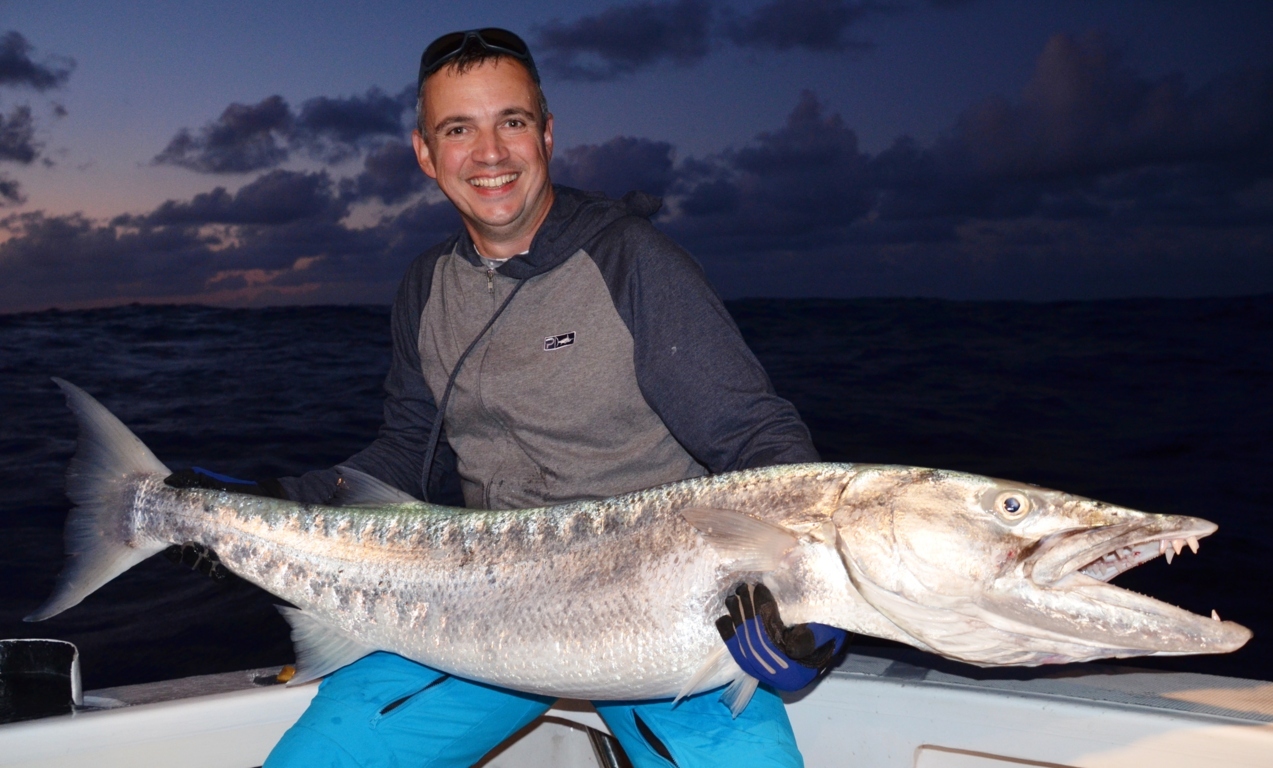BARRACUDA (Sphyraena Barracuda)
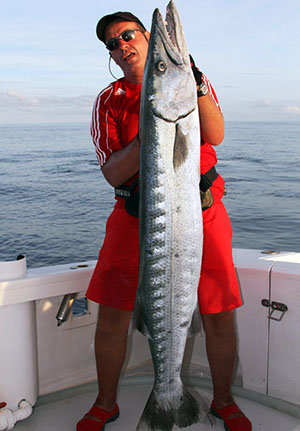
BARRACUDA CARACTERISTICS
Its scientific name sphyraena barracuda comes from the Greek sphyraena, which means pike and barracuda from the Spanish barraco: overlapping teeth.
- Its spindled shaped body looks a little like a pike. Its back is dark grey. Its silver sides are more or less dark with black irregular spots, more numerous towards the tail. Its belly is chalky white.
- Its lower jaw is prominent (longer than the upper one) and holds long sharp frightening teeth. They appear even with its jaws closed.
- Barracuda also distinguishes itself by its strong mucus smell.
2 IGFA world records of 38,5kg (deuce) are recorded on 01 March 1991 in Philippines and on 11 April 1992 in Kiribati for a top length of 2m.
Our club record is 27,5kg by Nicolas Pianezze - France on 16 April 2010.
BARRACUDA BEHAVIOUR AND REPRODUCTION
Barracudas evolve around reef, in shallow waters and close to the reef of tropical and subtropical spots all over the globe. They move in schools as concerns the young but the big ones (old ones) often become lonely.
Barracuda’s reproduction is not very well known. It reproduces off the coast while being in breeding groups. Female lays the eggs fecundated by males’ sperm, and spread out by currents, floating by the surface. When fries get born (about 40days later), they look for a shelter along the coast, in the reef breaks or in lagoon mangrove. At 15mm, the young are small adults and spend their first year in their shelter. During their 2nd year, fry are about 30cm and gather into schools until they are adults, when they will become lonely.
Sexual maturity is reached at 50 or 60cm, which corresponds to 2 years old for males and 4 years old for females.
Their life expectancy is not over 15 years old.
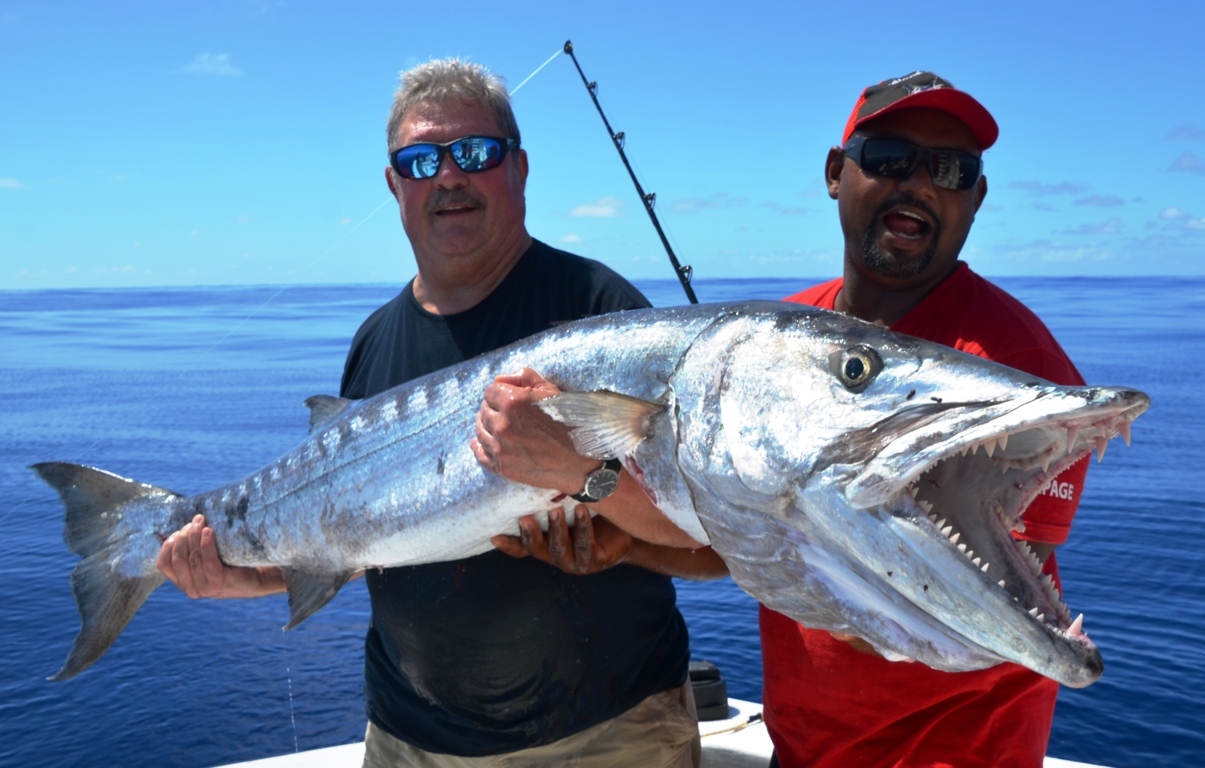
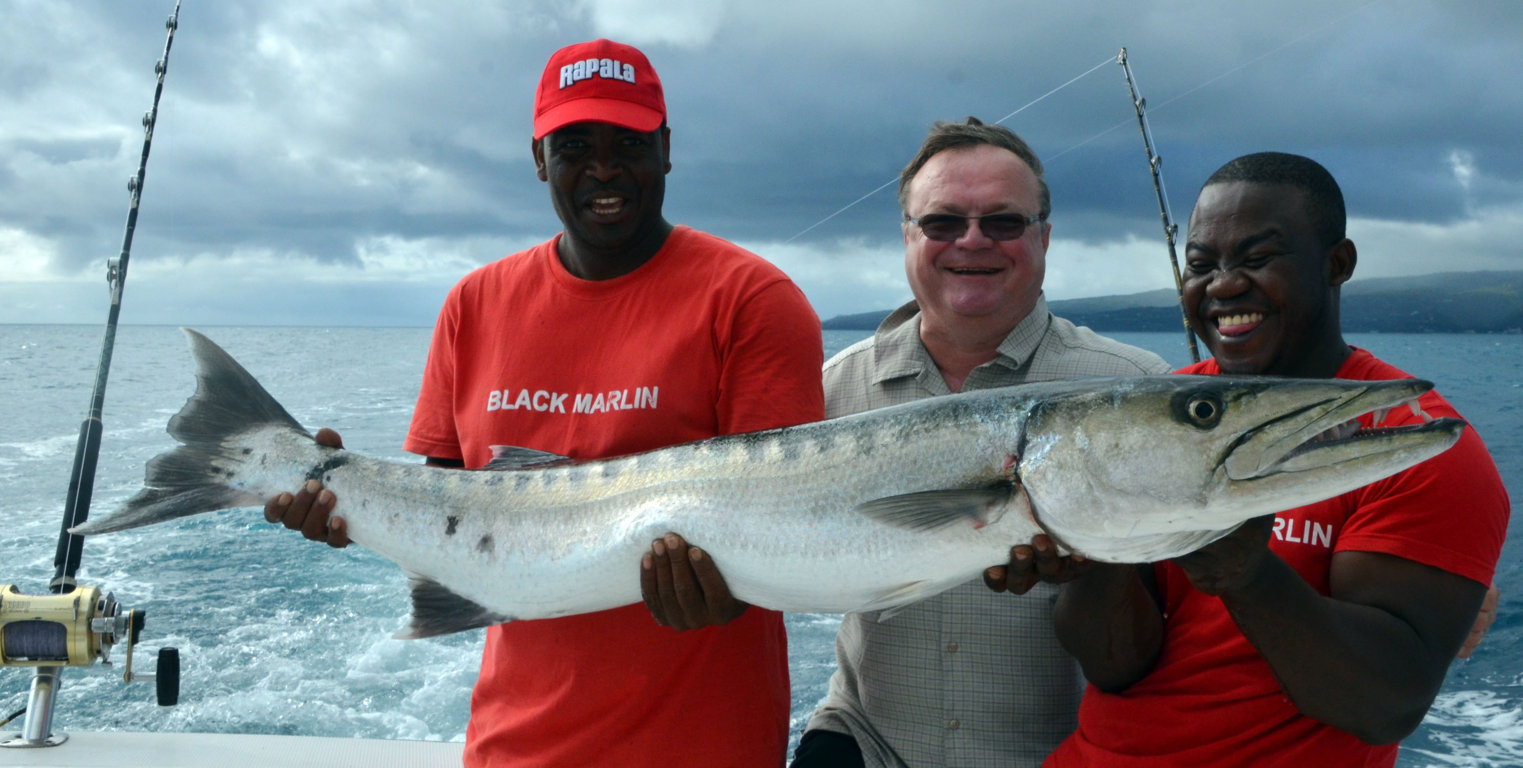
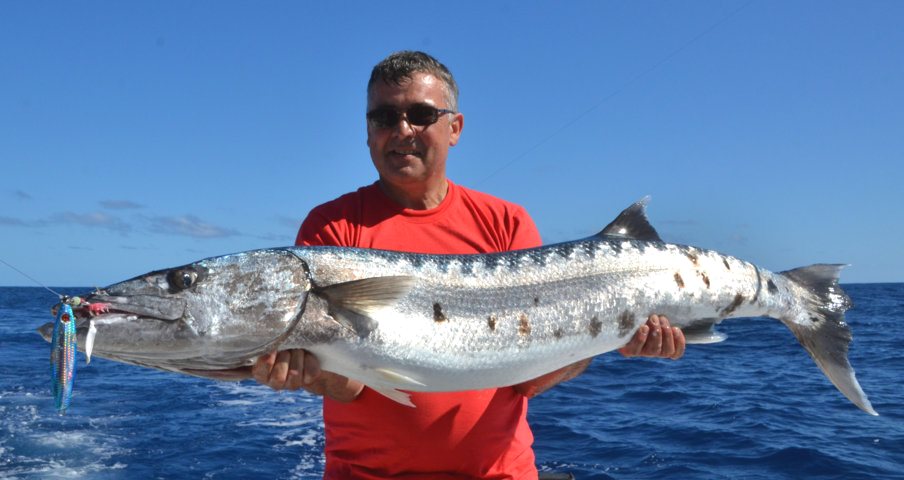
FEEDING OF BARRACUDA
Barracuda’s smell is quite developed. This voracious predator can smell a prey about 100m far. It slowly approaches it and charges in one fell swoop very quickly.
Barracuda eats everything possible: small fish, shellfish, and cephalopods.
Barracuda is toxic in Rodrigues and gives rise to itches or ciguatera. This intoxication is caused by a micro seaweed dinoflagellate Gambierdiscus toxicus that colonizes dead corals and produces one the most dangerous molecule in the world: ciguatoxin.
These seaweeds are swallowed by herbivorous fish, which get full of toxins.
Then, they reach carnivorous fish’s stomach bigger and more voracious. Ciguatoxin accumulates in organism according to the bioamplification principle. Its concentration gradually rises while graduating the food chain’s steps.
FISHING BARRACUDA
In Rodrigues we often catch barracuda while trolling across the continental plateau to reach the high reef, for example:
- Trolling, with any type of lures but like wahoo, it has a preference for trolling plugs (Rapala).
- Popping or stick-baiting.
- Jigging.
- Baiting on live bait (small bonitos).
Whatever the technic used, barracuda will present a spectacular rush (sometimes jumping out of the water, bait or lure being in its mouth).
Big barracuda has few predators (sharks, big grouper and great anglers…).
